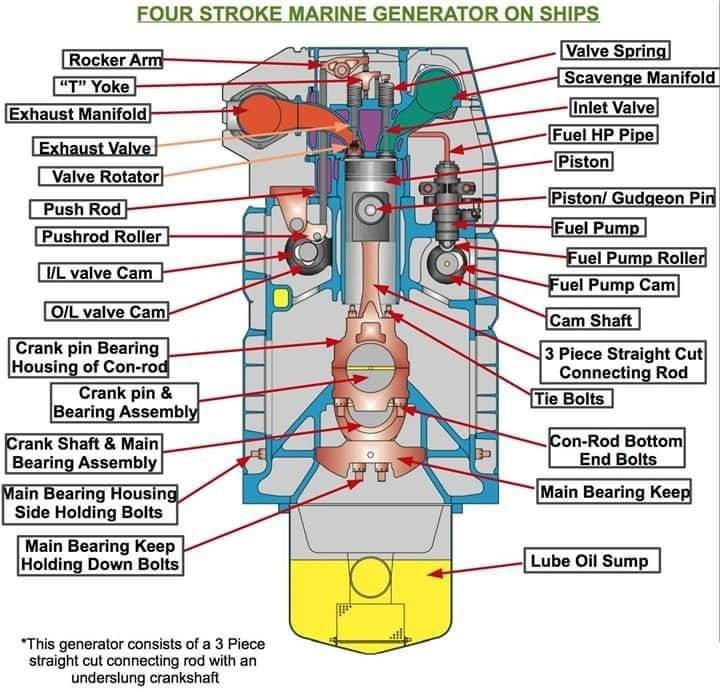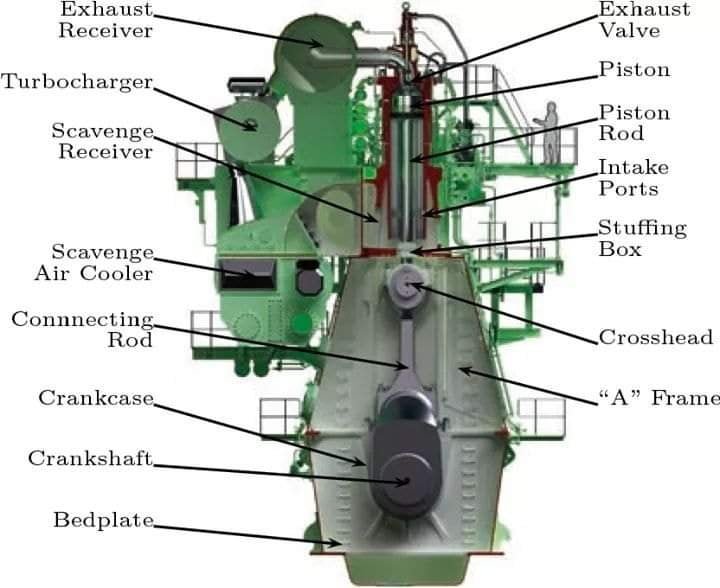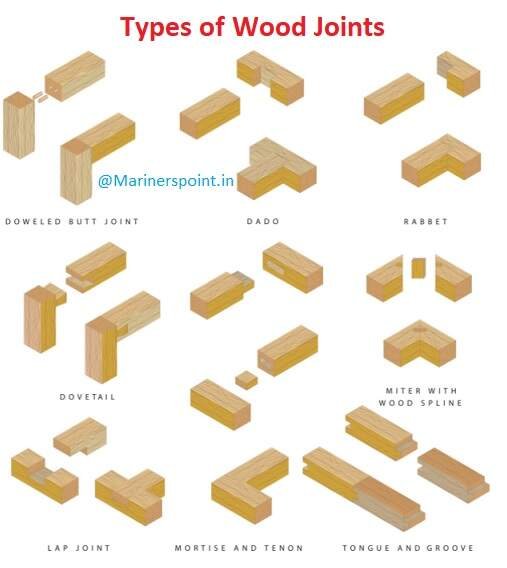How Ship’s Engine Works?
How Ship’s Engine Works ? is one of the important questions of mariner.
Let us start about how ship’s engine works ?
Marine engines on ships are responsible for propulsion of the vessel from one port to another. Whether it’s of a small ship plying in the coastal areas or of a massive one voyaging international waters, a marine engine of either 4-stroke or 2-stroke is fitted onboard ship for the propulsion purpose.
The marine engines are heat engines used for converting heat, which is generated by burning fuel, into useful work, i.e. developing thermal energy and transforming it into mechanical energy. The engines used onboard ships are internal combustion engines (a type), in which, the combustion of fuel takes place inside the engine cylinder and the heat is generated post the combustion process.
Ship’s Engine Working Principle
As mentioned earlier, IC (Internal combustion) engines are mainly used for marine propulsion and power generation purpose. The working of the marine engine can be explained by the following procedure:
– The fuel is injected at a controlled amount at high pressure
– A mixture of fuel and air is compressed inside the engine cylinder with the help of piston, which results in the explosion of the mixture when pressurized due to compression. As a result, heat is released which increases the pressure of the burning gas
– The sudden increase in the pressure pushes the piston downwards and transmits the transverse motion into the rotary motion of the crankshaft using connecting rod arrangement. The explosion is repeated continuously for maintaining the power output depending upon the type of marine engine and its usage.
The crankshaft is connected via a flywheel, either to the alternator or to a propeller arrangement for doing the mechanical work. To obtain continuous rotation of the crankshaft the explosion has to be repeated continuously.
Before the next explosion, the used gases are drawn out from the cylinder through an exhaust valve and fresh air is supplied, which helps to push the used gas and also to provide fresh air for next combustion process.
Types of marine diesel engines:The two basic types of marine diesel engines are –4 stroke engine

Compression stroke to compress the air-fuel mixture – which is an upward movement of the piston
Power stroke – in which the explosion takes place and the piston is pushed downwards
Exhaust stroke – which is an upward movement of the piston to draw out used gasesThe four events are completed in four strokes of the piston (two revolutions of the crankshaft). An inlet and exhaust valve is fitted on top of the cylinder head to draw in fresh air and to expel the used exhaust gas.Both, the valves and the fuel pump (which supply fuel to the injector), are operated using camshaft, which is driven by crankshaft using a gear drive. In a four-stroke engine, the camshaft runs at half the speed of the crankshaft. The crankcase is open to the piston liner arrangement, which assists in the lubrication of the liner.The 2 stroke engines are used for vessel propulsion and are bigger in size as compared to the 4 stroke engines. In this engine, the complete sequence is complete in two cycles i.e.Suction and compression stroke – which is the upward movement of the piston to draw fresh air inside and to compress the air-fuel mixture
Power and exhaust – which is the downward movement of the piston due to an explosion inside the chamber followed by removal of exhaust through the exhaust valve fitted on the top of the cylinder. A stuffing box is used which separates and seals the crankcase against the combustion chamber.How and where is ship’s engine made?If you have seen engines on ships, including small 4 stroke generator engines and also the massive 2 stroke propulsion engines, one thought which must have crossed your mind is how and where these engines were made?The most famous engine manufacturers, whose engines, are used in ships are:MAN Diesel & Turbo (Previously B&W engines) – famous for high, medium and slow speed marine engines
Wartsila (Previously Sulzer Engines) – famous for high, medium and slow speed marine engines
Mitsubishi – producing engines for light, medium, and heavy-duty applications
Rolls Royce – famous for the cruise ship and naval ship engines
Caterpillar manufactures – for medium speed and high-speed marine diesel engines




